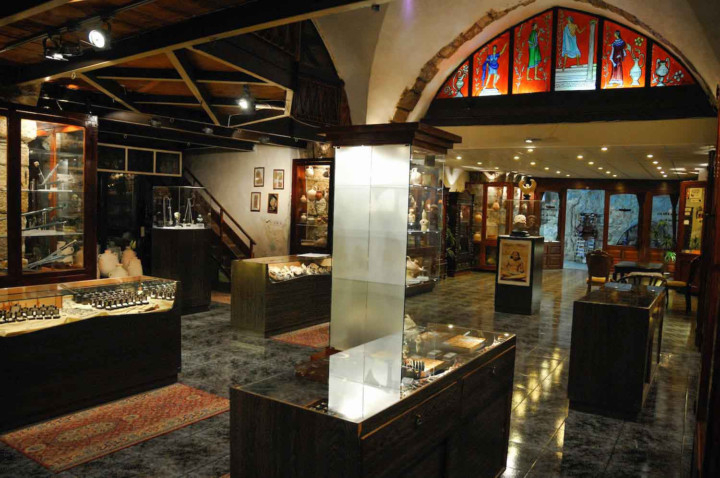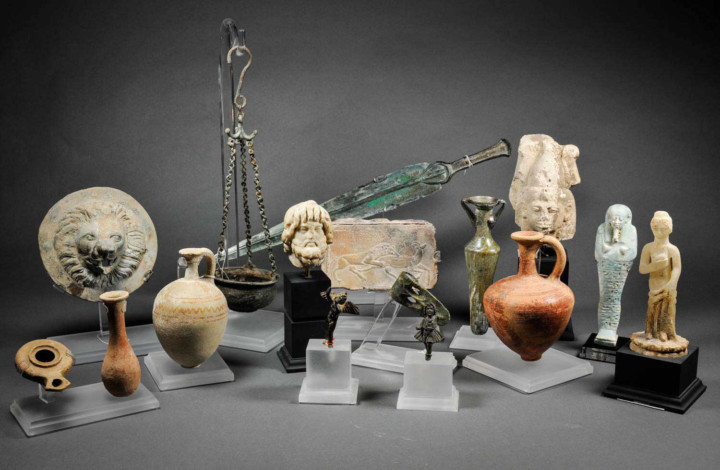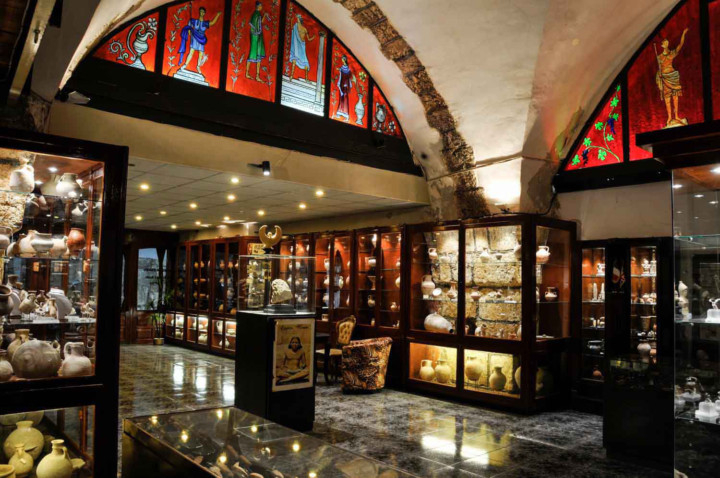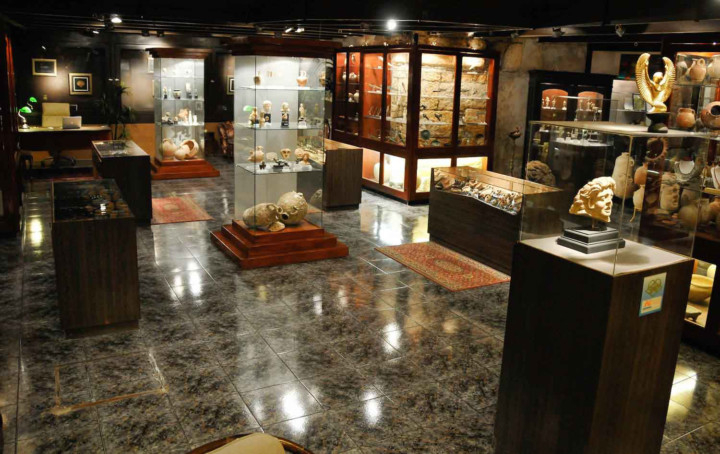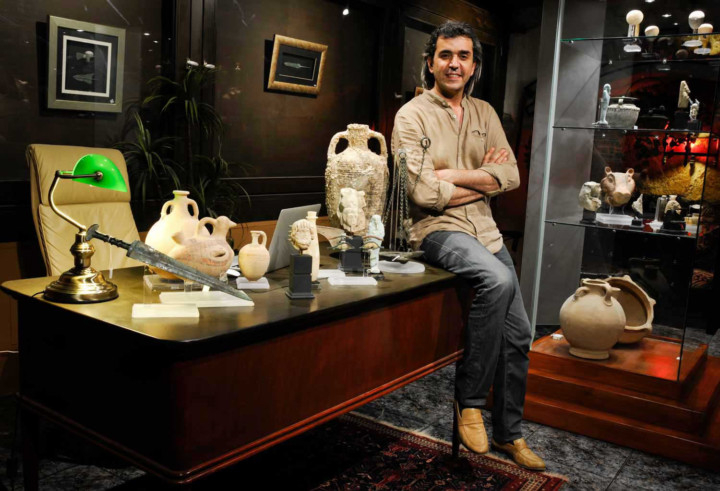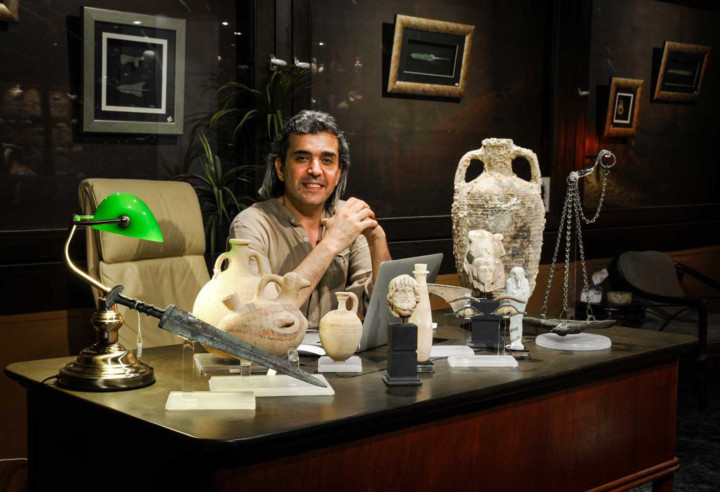
Strolling through the labyrinth of streets in the old city of Jerusalem, one imbibes the aura of spirituality that exudes from ancient Islamic and Christian buildings and cobblestone pavements and feasts one’s eyes on the antiques and antiquities, whose displays spill out on to the pavements in narrow alleyways from little stores, as traders haggle with the hordes of tourists passing by.
I head to Aweidah Gallery, which is located on the street that marks the 7th station on the Via Dolorosa Street where Christian tourists come to learn about the prized Holy Land antiquities from a renowned local expert.
Maher Aweidah, a tall, grey-haired, gentlemanly Palestinian, welcomes me into the impressive gallery with spotlights shining on a wide selection of antiquities. The soothing, luminous interiors offer a stark contrast to the myriad of stores I have passed by. The gallery looks and feels more like a museum with valuable items on display from the Neolithic age (6000BC) to the late Islamic period of Salah Al Deen.
“My father established this gallery in 1960 and you can note from the pillars and the architectural style that this building dates back to the time of the Crusades,” Aweidah says.
Pointing out the difference between antiques and antiquities, he says, “An antique is this desk from the Victorian times and antiquities are these oil lamps from the Roman era or other artefacts from ancient times that come from below the ground [or those which have been unearthed].”
Explaining his love for antiquities, Aweidah says, “I spent my childhood around my father, playing with coins, clay pots and lamps among the many antiquities he collected and I developed a passion for them, which I embellished over the years with reading and research.”
He believes that practical experience holds him in better stead than academic knowledge, and as a dealer, he sees and touches antiquities daily whereas academics know only the history [of antiquities]. Scientific tests, he says, which even museums now rely on, have advanced to the level where the authenticity of items can be accurately determined without any human intervention.
“The old city has a few authorised dealers in genuine antiquities and the rest trade in handmade fakes which the average tourist is not aware of and buys at his or her peril. As for us, we provide authentication of all our items, with a picture and a seal guaranteeing it for its lifespan,” says Aweidah.
Talking of how times have changed, he says, “In the 1960s, we used to buy from locals, but in the early 70s, the Israelis passed a law that curtailed this practice. Now any person who wants to trade legally in antiquities should obtain a licence from the Department of Antiquities and when this law came into effect, my father had to declare his previous stock and record it in an inventory to enable the Antiquities Department to track all our items.
“This legal restriction is designed to preserve the heritage by making sure that no architectural items like columns or walls with inscriptions leave Israel. However, provision is made in the law for them to be traded locally. All other items of antiquity such as statues, pottery, glass etc may be sold and transferred outside the country, making Israel the only country in the region that allows trade and exportation in antiquities.”
Has this law changed the way Aweidah and his fellow dealers do business?
“Our source for antiquities is auctions and old private collections. I travel regularly to Europe to buy from dealers, collectors and auctions, antiquities from Roman, Egyptian and Greek eras. Our export business is strictly controlled with detailed inventories and photographs that are monitored by the authorities. We spend a lot of time meticulously listing and entering the more than 4,000 items we have in stock, as mistakes may cost us dearly later.”
While it is understandable that restrictions and controls have been placed on local antiquities, what about importing from the region and beyond?
“A few years ago, we were free to import antiquities but with the wars in the region and so much of illegal and black-market trade going on, the same rules that apply to us on export are now imposed on import. This means that we need to obtain the provenance of the item and the history and if all the stipulated details are not available, the authorities will not approve the import. In short, exporting is not as strict as importing,” says Aweidah.
As for their gallery and business, Aweidah explains, “Our business is about archaeology and luxury items, and we are different from most stores in the old city that trade in souvenirs like wood carvings etc and fake antiquities. From the 1,000 to 2,000 tourists that come to Jerusalem, only one may be interested in what we have to offer, so we don’t really depend on tourism.”
So how is the business conducted?
“Our customers are mainly from Europe and the US. Also, we sell to museums in America, and we have many of our items on display in the Bible Lands Museum in Jerusalem. Our business is conducted on trust, reputation and by word of mouth. The origin and history of each item are authentically certified and painstakingly documented. With current technology, we list items on our website and through a regular newsletter, we keep our customers updated on newly acquired items. Although some may consider buying on the internet risky, we have built a reputation and visitors may not only see that we have a real gallery but we explain in detail the processes regarding authentication and guarantees.”
I am then joined by Aweidah’s sister and brother in this family business and learn that his sister Abeer uses ancient beads obtained from different periods in Jerusalem’s history to fashion jewellery and brother Hani custom makes all the stands for the items on display, which Aweidah emphasises is extremely important to bring out the beauty of each item.
Back into the busy old city, I feel happy about the fact that I am enlightened about each item of antiquity and its unique legacy and value that is determined by the historical and cultural period to which it belonged. For example, a lamp from the Herodian period may have lit a home during the time of Jesus and a clay pot from the post-Crusades period could have played a role in quenching the thirst of one of Salah Al Deen’s men.
Rafique Gangat is a writer and author based in Occupied Jerusalem



